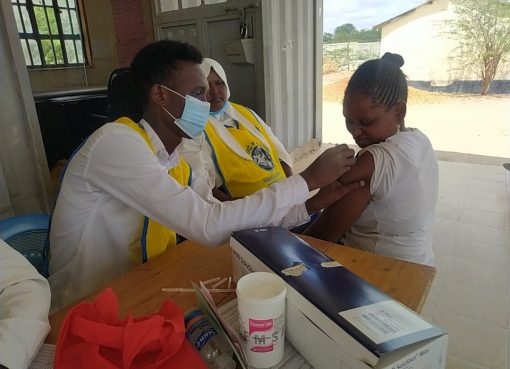A significant portion of beef, goat meat and other meat products sold in butcheries and eateries in Nakuru is contaminated with a toxic cocktail of bacteria, a new report by researchers based at Egerton University has revealed.
The study which evaluated microbiological safety of meat and ready-to-eat (RTE) meat products in urban and peri-urban parts of the county, indicates that the presence of Staphylococcus aureus, Escherichia coli (abbreviated as E. coli) salmonella spp and Shigella bacteria is worrying and efforts have to be put in place to cut on their levels.
Staphylococcus aureus was the most isolated negative bacteria in 87 beef and goat meat and other meat products samples, with a prevalence of 100 per cent, followed by Shigella spp in 81 samples (93 percent).
Staphylococcus aureus is a pathogen known to cause bloodstream infections, pneumonia, bone and joint infections and soft tissue infections, while infection with some strains of Shigella spp can result in diarrhea (sometimes bloody), fever, and stomach cramps.
The report compiled by lead investigators Dr. Hillary Odeckh Indago, Prof. Joseph Wafula Matofari and Dr. John Masani Nduko further notes that all the 15 samples of water randomly collected from the butcheries and eateries tested positive for E. coli, salmonella spp and Shigella bacteria.
“These results indicate a public health risk for consumers of RTE meat products in Nakuru County. The presence of these bacteria points a direct finger to bad handling and poor hygiene practices, because they indicate that the products have been in contact with faecal matter handling practices greatly influence contamination and subsequently meat quality and safety,” the report states in part.
The study titled ‘Analysis of Common Food-borne Pathogens in Ready-to-Eat Meat Products in Urban and peri-urban outlets in Nakuru County’ whose findings have been published in the African journal of Food Science concealed the names of eateries and butcheries where the samples were collected.
It recommends urgent action by enforcement agencies at county and national levels, and meat value chain actors towards improving meat quality as high levels of microbial contamination of meat pose a public health risk to consumers.
There was also significant contamination of salmonella and E.coli which tested positive in 79 samples (91 percent) and 68 samples (78.5 percent) respectively.
Salmonella is the bacteria that is most frequently reported as the cause of food-related illnesses. It causes an upset stomach, diarrhoea, fever, and pain and cramping in the stomach. E.coli on the other hand is a type of bacteria that usually lives in the intestines. It is also found in the gut of some animals.
Some strains of the bacteria can cause respiratory illness, a broad spectrum of abdominal complications and diarrhoea if you eat contaminated food or drink dirty water.
While many associate E. coli with food poisoning, you can also get pneumonia and urinary tract infections from different types of the bacteria. In fact, 95 per cent of urinary tract infections are caused by the bacteria.
“It can make you sick by making a toxin called shiga. This toxin damages the lining of your intestine,” says WHO.
Health experts warn that the bacteria, usually transmitted through contaminated food, are becoming difficult to treat due to increasing resistance to antibiotics.
“Roasted meats analyzed were contaminated with Staphylococcus aureus, E. coli, salmonella spp and Shigella bacteria while beef stews had 0 (zero) percent prevalence for Shigella ssp. Raw meats assessed had the highest viable coliform counts of Staphylococcus aureus and E. coli, while stewed goat meat had the lowest counts of above-mentioned microbes,” reads part of the report.
It adds, “Butcheries had the highest counts for all micro-organisms, while makeshift food kiosks had the lowest E. coli counts,”
The report compiled by lead investigators Dr. Hillary Odeckh Indago, Prof. Joseph Wafula Matofari and Dr. John Masani Nduko further indicates that all the 15 samples of water randomly collected from the butcheries and eateries tested positive for E. coli, salmonella spp and Shigella bacteria.
This comes barely a year after another probe commissioned by the United Kingdom-based World Animal Protection revealed that chicken, pork and other meat products stocked in outlets across the country are contaminated with superbugs.
Superbugs are strains of bacteria, viruses, parasites and fungi that are resistant to most of the antibiotics and other medications commonly used to treat the infections that they cause.
Sometimes, bacteria multiply so rapidly they crowd out host tissues and disrupt normal function, killing cells and tissues.
Superbugs kill 700,000 people annually in the world and they are projected to cause 10 million deaths per annum by 2050, with a cumulative economic impact of $100 trillion.
According to the World Health Organization (WHO), unsafe food containing bacteria, viruses, parasites or chemical substances causes more than 200 diseases, ranging from diarrhoea to cancer.
Globally, one in 10 people falls ill after consuming contaminated food and 420,000 die of food-related illnesses every year. Under-fives carry 40 per cent of the food-borne disease burden, accounting for 125,000 deaths.
A World Health Organization worldwide study found that food-borne illnesses were disproportionately more common in developing countries, noting that “people in developing countries often have difficulty coping with food-borne disease,”
For many living at or below the poverty line, food-borne illness perpetuates the cycle of poverty.
The symptoms of food-borne diseases range from mild and self-limiting (nausea, vomiting and diarrhea) to debilitating and life-threatening (such as kidney and liver failure, brain and neural disorders, paralysis and potentially cancers), leading to long periods of absenteeism and premature death.
And according to statistics from the Institute of Health Metrics and Evaluation, children are especially vulnerable.
Diarrhoeal diseases are the number one killer among children aged five years and below and the second deadliest killer among all other age groups.
“Food safety, food security and nutrition are linked. Unsafe food causes diseases, affecting food intake, which, in turn, leads to malnutrition. In the long term, malnutrition affects productivity, physical and cognitive development in children, fuelling a vicious cycle of poverty and food insecurity,” WHO says.
By Anne Mwale and Racheal Wangari




